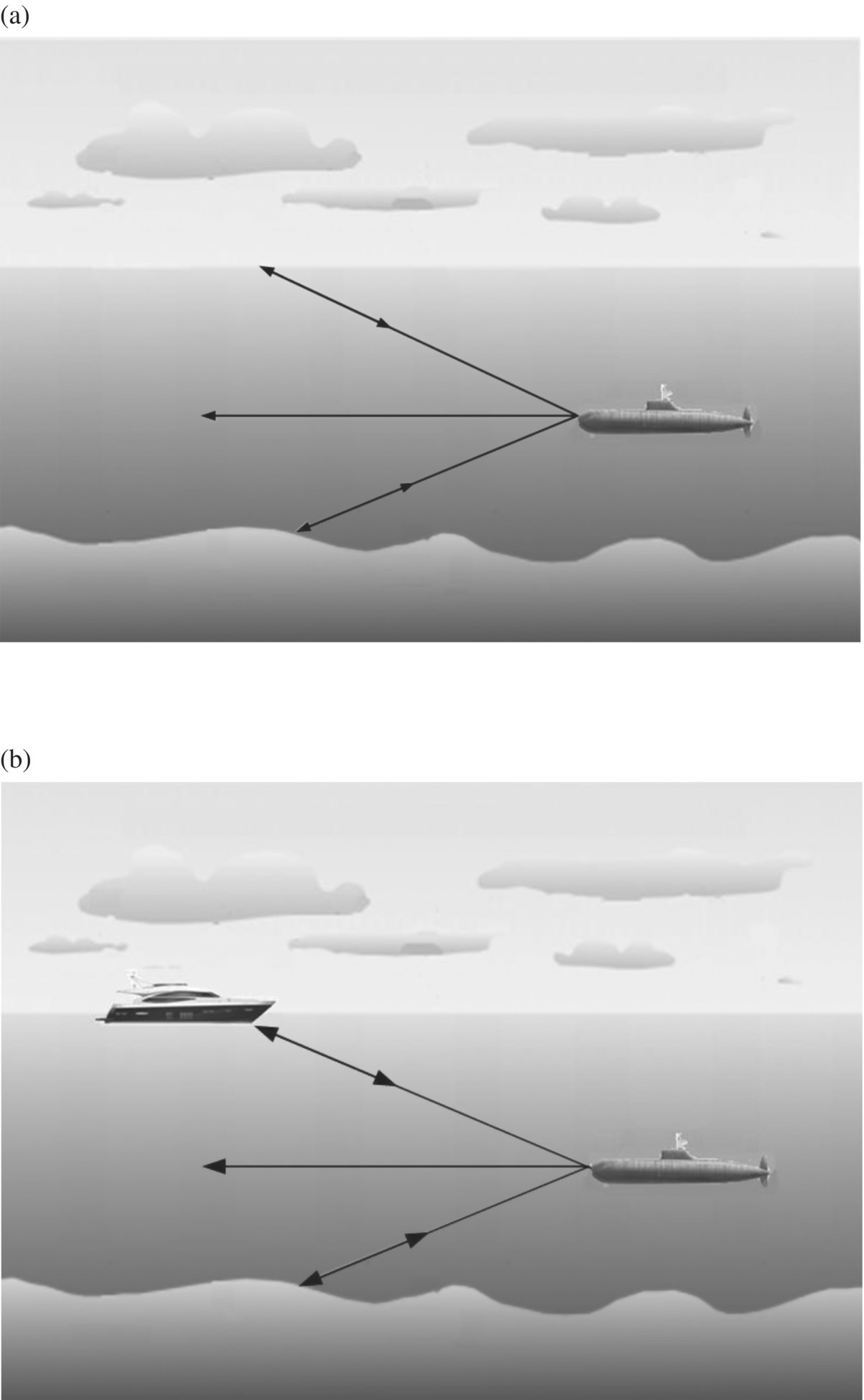4INTRODUCTION TO DETECTION THEORY
4.1 INTRODUCTION
A common problem encountered in many signal processing applications is that of having to detect a certain signal activity. For example, a scientist may use a seismometer to detect a seismic signal caused by either an earthquake or an underground nuclear explosion. In sonar signal processing, a submarine detects a reflected, usually acoustic, signal from an underwater object or another submarine using a hydrophone (see Figure 4.1). In yet another example, a ballistic missile defense (BMD) system may use a radar sensor to detect an incoming missile or a decoy. In communications system applications, signals of interest are modulated analog or digital communications signals. A communications receiver must first detect the signal of interest before proceeding to further processing. In the case of a cognitive radio, spectrum knowledge acquisition requires that the radio must first be able to detect signals in its RF environment before being able to determine what type of signals they are. While basic theory on signal detection discussed in this chapter is common to all these and other similar applications, we will present the material mostly using the communications terminology for obvious reasons.

FIGURE 4.1 A submarine radar needs to detect when a signal reflected from a target is present in its received signal. (a) When there ...
Get Signal Processing for Cognitive Radios now with the O’Reilly learning platform.
O’Reilly members experience books, live events, courses curated by job role, and more from O’Reilly and nearly 200 top publishers.

